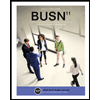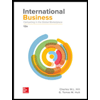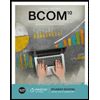
To determine:
The quick visual impression of the line chart if the vertical scale is set from a range of 0 to 500 and the reasoning for such an impression.
Introduction:
Identification of impurities measured in parts per million over each month, throughout the year.
Answer to Problem 1CA
Solution:
The line chart would show a less steep line producing an almost stabilized graph with minor change visually depicted in the number of impurities produced over the year due to the maximized vertical range.
Explanation of Solution
Given Information:
The three line charts that are given are namely, (a) Measured Impurities, (b) Measured Impurities and (c) Measured Impurities all have specifically different vertical scale ranges. The vertical scale (x-axis) represents the number of impurities measured parts per million and the horizontal scale (y-axis) represents the time which are the months over the course of a year. Line Chart (a) has a vertical scale from 0 to 120, (b) has a vertical scale from 60 to 110 and (c) has a vertical scale from 0 to 200. Each of these line charts lookvisually different from each other.
Changing the vertical scale to maximum effects on how the line chart appears to be. The higher the maximum of the vertical scale the less steep the line chart would appear to be with less inclination across the trends.This in turn, develops a misleading chart to visualize. A vertical scale with a range from 0 to 120 as depicted in (a) shows exactly what needs to be shown to the reader, with no exaggeration. On the other hand, the line chart depicted in (b) where the vertical scale ranges from 60 to 110, exaggerates the reading taken for the impurities measured, leading to a biased decision undertaken under inaccurate visual representation. Finally, the chart depicted in (c), is far too unnoticeable to identify a trend across the chart due to the broad range from 0 to 200, thus causing inaccuracy in reading once gain. The line chart (c) helps us in providing a clearer picture to visualize a range as such from 0 to 500. The trends across a graph with such a large vertical scale would provide data points located insignificantly different from each other.
Want to see more full solutions like this?
Chapter 11 Solutions
Excellence in Business Communication (11th Edition)
- no ai What are adjusting journal entries and why are they necessary?arrow_forwardLawrence Industries plans to produce 30,000 units next period at a denominator activity of 45,000 direct labor hours. The direct labor wage rate is $16.00 per hour. The company's standards allow 2.2 yards of direct materials for each unit of product; the material costs $8.50 per yard. The company's budget includes a variable manufacturing overhead cost of $3.25 per direct labor hour and fixed manufacturing overhead of $270,000 per period. Using 45,000 direct labor hours as the denominator activity, compute the predetermined overhead rate and break it down into variable and fixed elements.arrow_forwardWhat are adjusting journal entries and why are they necessary?arrow_forward
 BUSN 11 Introduction to Business Student EditionBusinessISBN:9781337407137Author:KellyPublisher:Cengage Learning
BUSN 11 Introduction to Business Student EditionBusinessISBN:9781337407137Author:KellyPublisher:Cengage Learning Essentials of Business Communication (MindTap Cou...BusinessISBN:9781337386494Author:Mary Ellen Guffey, Dana LoewyPublisher:Cengage Learning
Essentials of Business Communication (MindTap Cou...BusinessISBN:9781337386494Author:Mary Ellen Guffey, Dana LoewyPublisher:Cengage Learning Accounting Information Systems (14th Edition)BusinessISBN:9780134474021Author:Marshall B. Romney, Paul J. SteinbartPublisher:PEARSON
Accounting Information Systems (14th Edition)BusinessISBN:9780134474021Author:Marshall B. Romney, Paul J. SteinbartPublisher:PEARSON
 International Business: Competing in the Global M...BusinessISBN:9781259929441Author:Charles W. L. Hill Dr, G. Tomas M. HultPublisher:McGraw-Hill Education
International Business: Competing in the Global M...BusinessISBN:9781259929441Author:Charles W. L. Hill Dr, G. Tomas M. HultPublisher:McGraw-Hill Education





